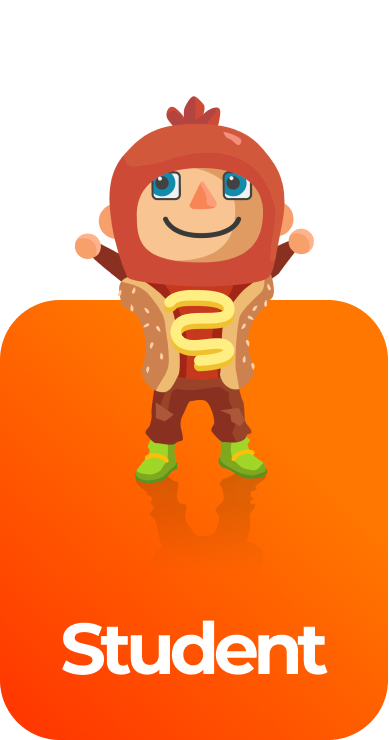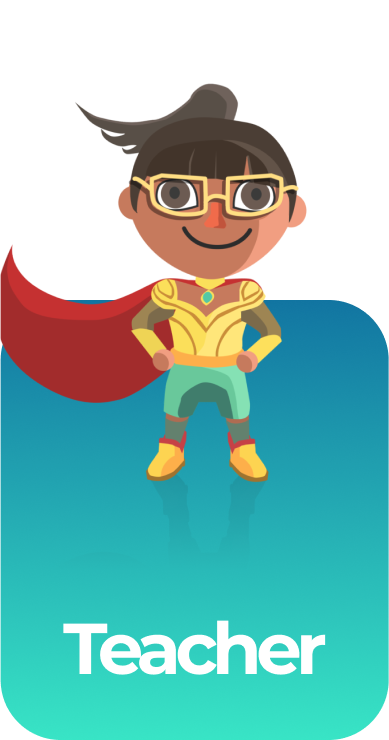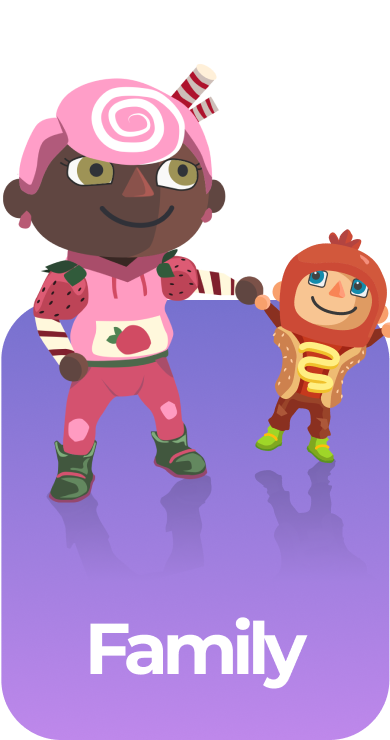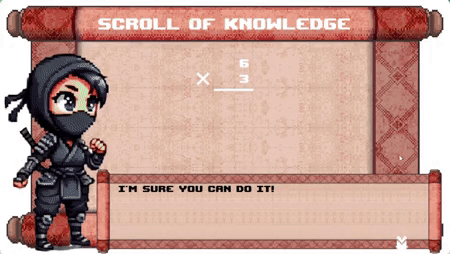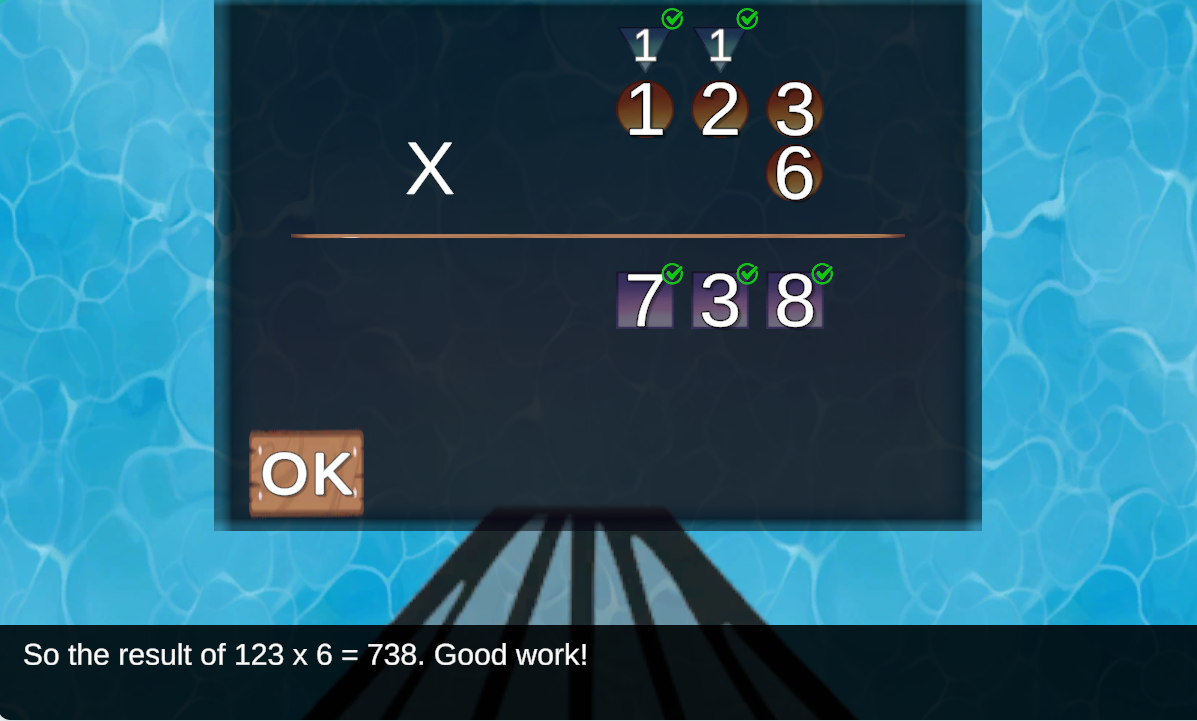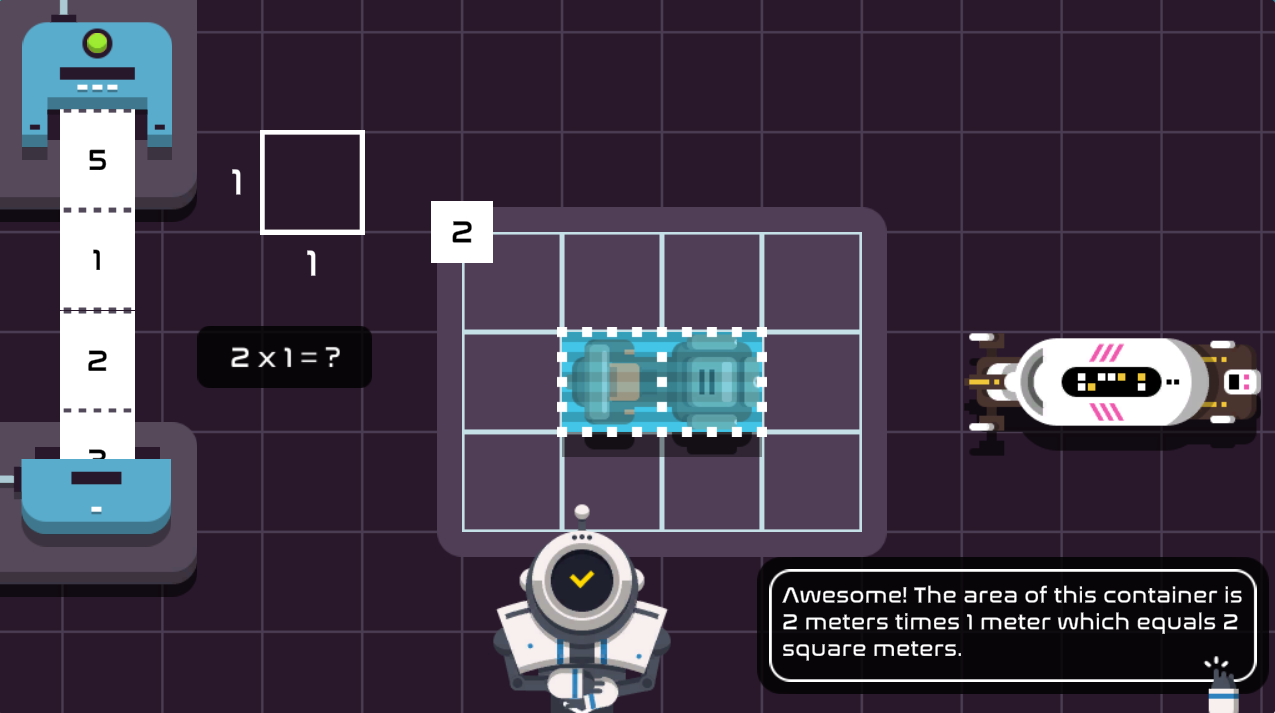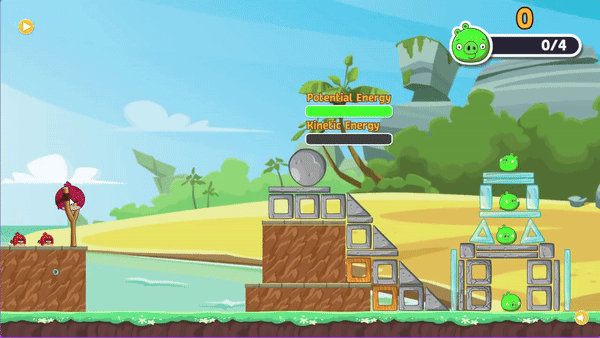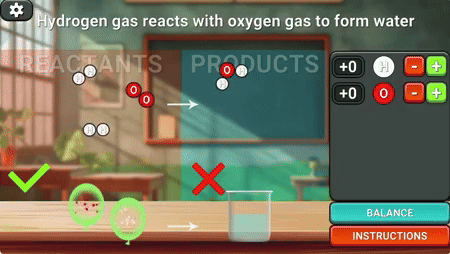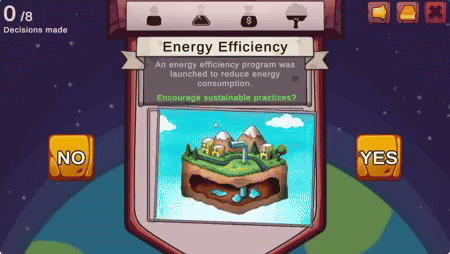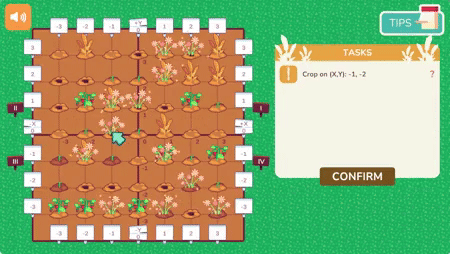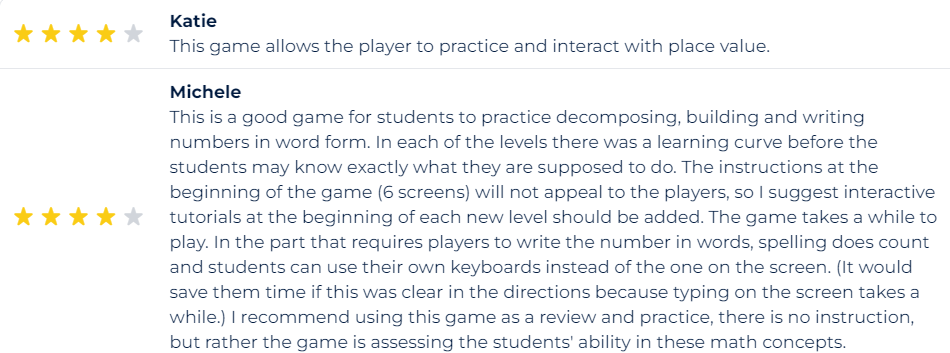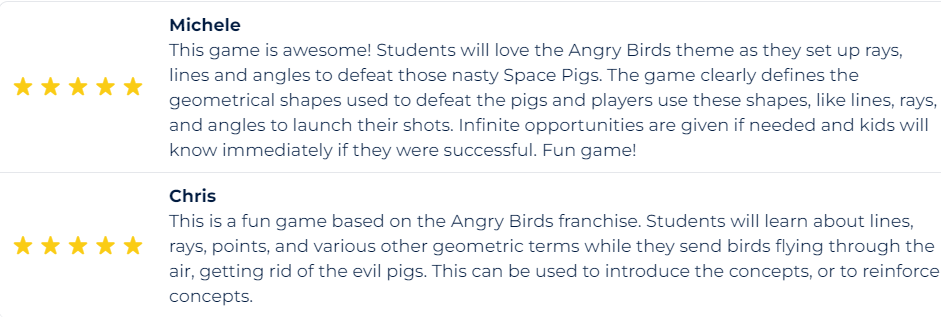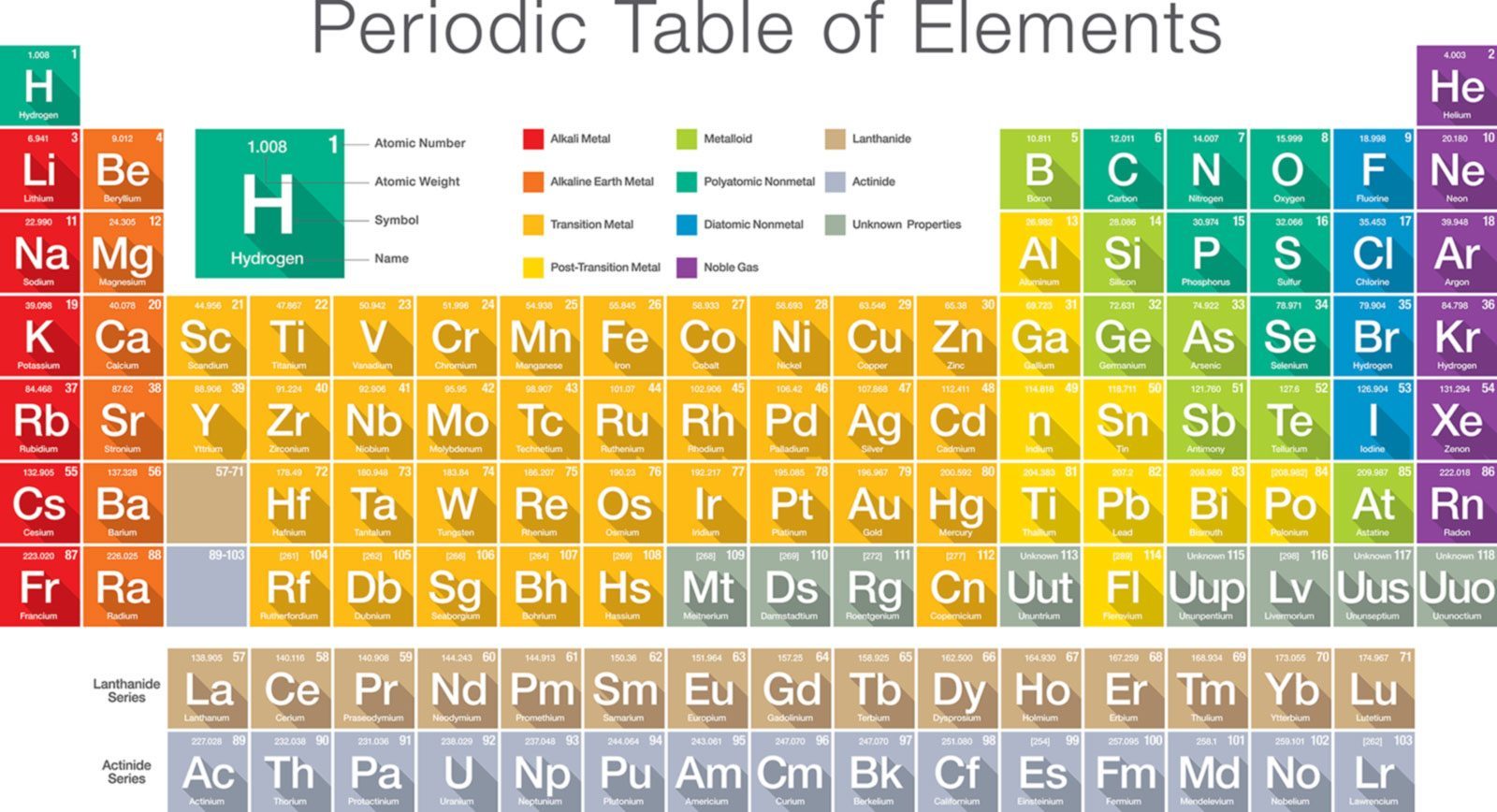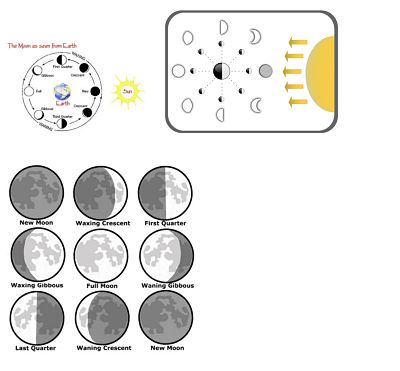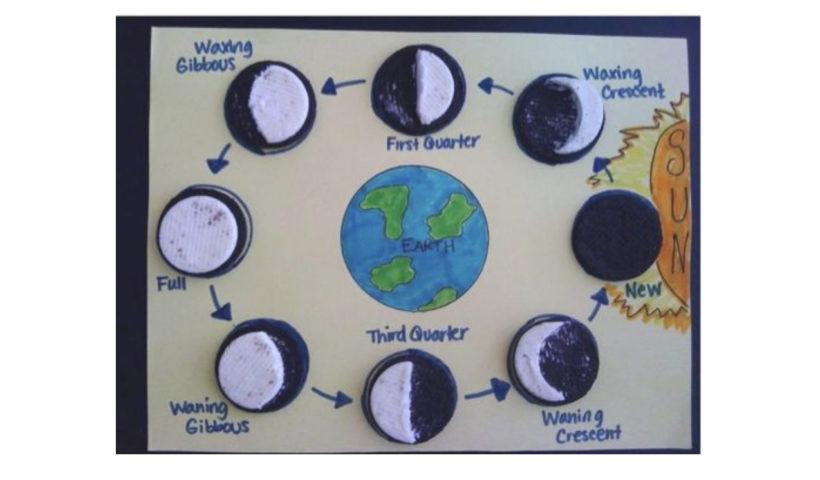The Ultimate List of Learning Games for Every Classroom
Estimated reading time: 19 minutes
Ready to transform standards and learning objectives into something your students actually look forward to? Welcome to the world of educational games that fuse curriculum essentials with engaging, story-driven adventures!
Whether you’re an elementary science teacher trying to illuminate the wonders of plant life or a middle school math instructor determined to demystify fractions, these games have you covered. By blending core concepts with interactive gameplay, each title provides an opportunity for students to practice skills and deepen understanding—no more blank stares, just bright eyes and raised hands.
This blog post brings you a full collection of games that align tightly with standards, from the Next Generation Science Standards (NGSS) to the Common Core State Standards (CCSS).
They’re organized by subject and level, making it easy to find the perfect fit for your lesson plans.
Each game’s description includes the key concepts addressed, the standard it supports, and ways that educators can leverage its features. Prepare to turn your classroom into a playful proving ground, where learning objectives transform into stepping stones, and academic standards, become the backdrop for unforgettable fun.
Table of contents
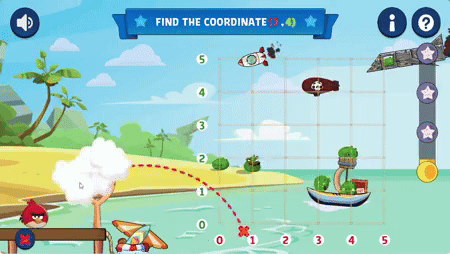
Learning Games on Science for Elementary School
Science is a world of wonder waiting to be explored, and what better way to spark curiosity in young minds than through exciting, interactive games?
Dive into our collection of science games and watch students’ scientific curiosity come to life.
Furball Adventure
Structure of Matter | ES-PS1.A-1
Furball Adventure turns the concept of matter states into a cozy, creative challenge. Students help Little Furball decorate his new home in a world where success comes from understanding solids, liquids, and gases.
By choosing the right materials and applying knowledge of measurement conversions, players earn tickets for the Space Fair mini-games, securing prizes and unlocking new décor. As they progress, they’re not just passing levels—they’re grappling with real-world problem-solving that will reinforce your science lessons.
For educators, Furball Adventure provides a narrative-driven context to teach the Structure of Matter standard. Instead of lecturing about molecules and measuring units, you can let students experience these concepts hands-on.
After playing, you can debrief by having your class relate in-game decisions to actual scientific principles—like how changing matter states can help solve everyday problems. It’s a sneaky way to slip in content knowledge: they think they’re decorating a home, but they’re also mastering fundamental science concepts.
Candy Rush
Scientific Method | ES-SM
Candy Rush turns the classic steps of the scientific method into a rollicking quest, where students apply observation, hypothesis formation, experimentation, data analysis, and conclusions to save islands from candy-hungry monsters.
Players advance by making informed guesses, testing them in real time, and adjusting their strategies accordingly. As they learn to differentiate between variables and analyze results, they’ll gain a hands-on understanding of the process that drives all scientific inquiry.
For teachers, Candy Rush is a fantastic way to introduce the scientific method without endless worksheets. Your players will see firsthand how forming a hypothesis isn’t just a guess; it’s a strategic tool to solve tangible problems.
After the game, consider having your class share their in-game experiments and results. Did their data analysis lead them astray at any point? How did they improve? By comparing their experiences in Candy Rush to lab work or class projects, you help them internalize the essential skills of good science.
Masterplant
NGSS Standard: Plant Growth and Functions | 4-LS1-1
Masterplant brings plant biology to life by having students nurture their very own virtual rose. As players feed, protect, and accessorize their plant, they’re simultaneously uncovering the secrets of photosynthesis, plant structures, and reproduction.
By linking survival tasks to core botanical concepts, Masterplant simplifies what could be abstract content, making it relatable and tangible. They’re not just reading about stems and leaves—they’re helping their digital rose thrive.
For educators, this game offers a perfect segue from theory to practice. You can have students draw parallels between their digital garden and the plants outside the classroom window. Discuss how plant structures serve distinct functions—like roots anchoring plants and leaves capturing sunlight.
By reflecting on what they did in the game, they’ll gain a solid grounding in plant biology and ecological balance. Plus, it’s a no-mess way to encourage “green thumbs” right in your classroom.
Check out the assignment Plant Structure and Function in Legends of Learning
The Space Domes Resort
NGSS Standard: Earth and the Solar System | ES-ESS1.B-1
The Space Domes Resort game catapults students into a luxurious interstellar getaway, hosted by an advanced A.I. named Eris. While enjoying their cosmic vacation, players immerse themselves in astronomy concepts: constellations, planetary motion, lunar phases, and Earth’s rotation and revolution.
This narrative-driven adventure transforms celestial phenomena into hands-on learning, where every solved puzzle and mystery deepens their understanding of the universe.
Educators can use The Space Domes Resort as a launchpad for deeper astronomy lessons. After playing, have your students explain how Earth’s rotation affects day and night, or why certain constellations are visible only in specific seasons.
Let them share their favorite in-game discoveries and link them to real-world observations. With this approach, memorizing facts about Earth’s place in space evolves into storytelling and applied understanding, lighting a spark of curiosity about the cosmos.
Check out this assignment with Space Domes in Legends of Learning
Food Webs
NGSS Standard: Cycles of Matter and Energy Transfer | ES-LS2.B-1
Food Webs: Adventure of Energy invites players into an enchanted ecosystem guided by Elva, a magical fairy. Students trace the path of energy from the sun through producers, consumers, and decomposers, seeing firsthand the interconnectedness of life.
By actively participating in these food chains and webs, they gain insights into how energy moves and how each organism plays a critical role in maintaining ecological balance. Teachers can also use this game to illustrate complex ecological relationships without resorting to static diagrams.
After gameplay, students can construct their own food webs on paper, labeling each organism’s role. They’ll recall Elva’s lessons and the game scenarios to explain why removing one species might destabilize the entire system. This reflection cements their understanding of energy flow and ecological dynamics, making your life science lessons more meaningful and memorable.
Food Webs: Get all the content available on Legends of Learning
Little Chemist Amelia
NGSS Standard: Chemical Reactions | ES-PS1.B-1
Little Chemist Amelia places students in a safe, virtual lab where they conduct experiments to learn about mixtures, physical changes, and chemical reactions. They learn the difference between physical blending and chemical transformations by mixing ingredients to create fertilizers or bake cakes. Instead of dry definitions, the game offers a sensory experience—well, at least a digital one—where students see the effects of their actions unfold immediately.
In the classroom, you can use the game’s scenarios as a springboard for hands-on demos (in a real lab, of course). Ask students to compare what they did in-game—like separating mixtures—with a real-life classroom experiment. Students develop a holistic understanding of chemical reactions by connecting virtual outcomes with tangible ones. They won’t just memorize definitions; they’ll understand the underlying principles and be better prepared to tackle more complex chemistry concepts down the line.
See the public assignment for Mixtures and Solutions available on Legends of Learning
Discover all the extra content available about Chemical Reactions on Legends of Learning
Crumbling Structure
NGSS Standard: Weathering and Erosion | ES-ESS2.A-1
Crumbling Structure sends players on a geologic adventure, introducing them to the natural forces that carve Earth’s landscapes. From discovering how wind and water shape cliffs to understanding how ice and gravity alter terrains, players learn that weathering and erosion are ongoing, dynamic processes. They’ll see how different landforms—from sandy dunes to carved valleys—evolve over time, making Earth’s surface a constantly changing canvas.
Teachers can build on this gameplay experience by having students analyze local or global examples of weathering and erosion. Maybe they can bring in photos of the Grand Canyon or their own backyard creek to discuss similar processes. Leverage Crumbling Structure’s interactive lessons about real-world environments to empower students to see Earth science as a living story rather than distant trivia. The result is a deeper, more lasting understanding of geology.
Learning Games about Science for Middle School
DocDuck: Cells and Life
NGSS Standard: Cells and Life | MS-LS1.A-1
DocDuck: Cells and Life invites students into a virtual lab where they compare living and nonliving things with a digital microscope. They’ll examine the structures of unicellular and multicellular organisms, learn about tissues and organs, and explore the factors that allow life to flourish on a planet. By the end, they don’t just know these concepts; they’ve interacted with them in a hands-on simulation that feels like genuine discovery.
As an educator, you can use DocDuck’s world to enhance your life science unit. Before a lab activity on cells, let your students explore the game. Afterward, prompt them to identify what makes a cell “alive” and how different cell types serve different functions. This helps them form concrete mental models. Instead of thinking of cells as tiny mysteries, they’ll approach them with familiarity and confidence—ready to connect the digital experiments to the microscopic wonders seen under the real classroom microscope.
Check out all the Cells and Life Science games and video lessons available on Legends of Learning
Save the Fish
NGSS Standard: States of Matter | MS-PS1.A-4
Save the Fish is a puzzle-based adventure where students must manipulate solids, liquids, gases, and even plasma to solve physics challenges. They’ll freeze water to form bridges, condense vapor to slip through barriers, and learn that changes in states of matter aren’t just vocabulary terms—they’re tools to navigate and overcome obstacles in a fun, dynamic environment.
For teachers focusing on matter’s states and particle behavior, this game serves as a perfect hook. After playing, ask students how they decided when to heat or cool a substance. Relate their strategic decisions to the real-life processes of melting ice or evaporating water. You help them internalize concepts like particle spacing and density by framing states of matter as puzzles rather than static facts. Thus building knowledge both playful and practical.
Get a free assignment to teach States of Matter and their Structure on Legends of Learning
Plants Vs. CO2
NGSS Standard: Photosynthesis | MS-LS1.C-1
Plants Vs. CO2 challenges players to restore a polluted planet by harnessing the power of photosynthesis. As they plant greenery and watch carbon dioxide levels drop, students see photosynthesis as a life-sustaining reaction that transforms radiant energy into the chemical energy vital for ecosystems. Each level completed is a step towards understanding plants’ critical role in maintaining atmospheric balance and supporting life.
In class, you can pair this game with a lab where students measure the growth of real seedlings under different light conditions. After playing, they’ll grasp why plants are essential for purifying air and producing oxygen. Have them discuss the parallels: How did their in-game actions mirror the real-world importance of plants? Link the game’s storyline to actual environmental conservation efforts, thus encouraging ecological awareness and an appreciation for green living.
Want to get more content about this standard? Check out Photosynthesis Science Games on Legends of Learning
Genetic Zoo
NGSS Standard: Genes and Traits | MS-LS3.A-1
Genetic Zoo turns DNA and heredity into a hands-on exploration of a virtual park. Students observe traits in animals, delve into genes and chromosomes, and see how mutations can alter characteristics. Instead of memorizing genetic terms, players experience them, deciding which traits matter in different environments and discovering how heredity shapes the next generation of their virtual zoo inhabitants.
After the game, teachers can lead discussions on the nature of inherited vs. acquired traits. Students can examine how environmental factors might affect trait expression, connecting in-game examples—like different coat patterns in animals—to scientific principles. This approach helps them understand genetics beyond simple Punnett squares, recognizing that heredity is dynamic, interactive, and fascinating rather than just another topic in the textbook.
Want to get more content about this standard? Check out Genes and Traits Science Games | Legends of Learning
Agent Barkley and the Tectonic Temple
NGSS Standard: Plate Tectonics | MS-ESS2.B-1
In Tectonic Temple, players join Agent Barkley on a quest that reveals Earth’s geologic history. They’ll see how tectonic plates diverge, converge, and transform, resulting in volcanoes, mountain ranges, and earthquakes. The storyline cleverly integrates scientific evidence—fossils, rock formations, and seafloor spreading—so that theory and application blend seamlessly.
Teachers can use this gameplay to energize a unit on geology. After students complete levels, ask them to identify what type of boundary caused certain landforms. Encourage them to connect their in-game findings to real-world tectonic events, such as the formation of the Himalayas or the occurrence of seismic activity near the San Andreas Fault. This makes the theory of plate tectonics feel like a series of exciting revelations rather than a static list of definitions.
Get a Free Assignment about Tectonic Plates Here!
Check out all the content available for Plate Tectonics on Legends of Learning
Weather Changers
NGSS Standard: The Water Cycle and Weather Patterns | MS-ESS2.C-2
Weather Changers places students in a global playground of climates, humidity, and temperature fluctuations. They’ll experiment with conditions that create rain, snow, or drought, and investigate how air masses interact. By manipulating variables and observing the results, they gain a concrete understanding of the water cycle’s role in shaping local and global weather.
After playing, teachers can have students chart out the water cycle they observed in-game. Encourage them to draw parallels with real-world patterns, like explaining why desert areas receive less precipitation or why coastal regions often have milder weather. They’ll understand that weather isn’t random when connecting game events to classroom lessons — it’s the product of intricate interactions they’ve already manipulated and understood firsthand.
Check out the free assignment in Legends of Learning!
Check out all the content available for this standard on Legends of Learning
Learning Games about Math for Elementary School
Boost your students’ math skills and excitement with short, story-driven games that transform key concepts into playful adventures. It’s practice made fun, a perfect tool for building confidence and enthusiasm!
The Hack: Place Values
CCSS Standard: Understanding Place Value | 5.NBT.A.1
In The Hack: Place Values, students become code-cracking heroes who use their knowledge of the base-10 system to outsmart a rampant computer virus. Every correct answer chips away at the virus’s control, showing learners that place value isn’t just about lining up numbers—it’s about understanding the value each digit holds, even in complex, multi-digit settings.
Teachers can highlight how mastering place value sets the stage for success in addition, subtraction, and beyond. After playing, have students rewrite numbers in expanded form, or ask them to explain how the same digit represents different amounts depending on its position.
This game turns a foundational math concept into an action-packed mission, making sure students not only understand place values but also appreciate their power.
Get a free ‘Understand Place Value’ assignment on Legends of Learning
Pigglesney Dash: The Prime Piggy Factor
CCSS Standard: Prime, Composite, and Factor Pairs | 4.OA.B.4
Pigglesney Dash transforms the hunt for prime and composite numbers into a playful adventure. Students help a courageous pig navigate forests and unlock doors by breaking numbers into factor pairs. Along the way, they distinguish prime numbers from composites, all within a storyline that feels more like a quest and less like a rote math drill.
After the game, teachers can have students list the prime numbers they encountered and explain what made them prime. They can also use factor trees or arrays to visualize the factorization process.
This combination of digital exploration and traditional follow-up helps cement number theory concepts, allowing learners to recognize patterns and relationships within the number system.
Get a free assignment about Prime, Composite, and Factor Pairs on Legends of Learning
Attack on Blob: Mega Multiply
CCSS Standard: Multiplying Multi-Digit Numbers | 4.NBT.B.5
Attack on Blob throws students into an intergalactic battle where math is their weapon. To fend off blob invaders, players must multiply multi-digit numbers accurately and efficiently. Whether using area models or standard algorithms, students practice and refine their skills in an environment where getting it right means saving the day.
Teachers can ask learners how they solved challenging multiplication problems in-game and have them demonstrate those strategies on the board. By examining which approaches felt most intuitive, students gain confidence in their chosen methods. The game’s lively narrative ensures multiplication stops feeling like grunt work, evolving instead into a series of problem-solving triumphs.
Get a sample free assignment about Multiply Multi-digit Numbers on Legends of Learning
Escape the Factory
CCSS Standard: Grouping Symbols and Order of Operations | 5.OA.A.1
In Escape the Factory, students navigate a malfunctioning industrial maze by using parentheses and other grouping symbols to clarify the order in which operations should be performed. This puzzle-like setup reveals why these mathematical “clues” are critical for arriving at the correct solution. They’ll realize that a misplaced parenthesis can mean the difference between unlocking a door or getting stuck.
Following the game, teachers can present similar math problems on the whiteboard. Have students add or remove parentheses and predict how it changes the outcome. Connect the game’s scenario to textbook exercises, to ensure that the concept of order of operations has context.
Students won’t just remember PEMDAS; they’ll understand it’s the key to solving complex challenges, both in-game and in math class.
Click here to get a sample assignment about Grouping Symbols and Order of Operations
The Fractions Space Tournament
CCSS Standard: Understanding Fractions as Parts of a Whole | 3.NF.A.1
Fractions Space Tournament blasts learners into orbit where they pilot ships through fraction-based challenges. Seeing fractions visually represented as parts of a whole helps students grasp what a fraction truly is, rather than just memorizing numerators and denominators. The interstellar setting makes fractions feel more like a cosmic puzzle than a math chore.
After the game, teachers can have students draw pizza slices or use fraction strips to represent what they encountered in space. You can bridge the gap between the abstract and the concrete by relating these digital voyages to tangible objects in the classroom. This approach encourages a conceptual understanding that sticks long after the final rocket boosters fire.
Get a free assignment about Understand Fractions As Part Of A Whole
Scrolls of Power
CCSS Standard: Parentheses, Brackets, and Braces in Expressions | 5.OA.A.1
Scrolls of Power whisks students away to the mystical land of Numeria, where grouping symbols are magic spells. Learners see how parentheses, brackets, and braces change the order of operations and, consequently, the numerical outcomes of their spells. This narrative underscores the importance of understanding mathematical conventions to achieve desired results.
Back in the classroom, teachers can draw parallels between magical spells and well-structured math problems. Encourage students to rewrite numeric expressions with different grouping symbols and challenge them to predict the new results. You ensure learners find parentheses less intimidating and more empowering in guiding problem-solving by weaving a story into the lesson,.
Get a sample assignment about this standard here!
Math Games for Middle School
DeciMagic Hero
CCSS Standard: Arithmetic with Decimals | 6.NS.B.3
DeciMagic Hero puts decimal arithmetic front and center, turning complex calculations into spell-casting sequences. Players learn to add, subtract, multiply, and divide decimals to defeat enemies and advance their hero’s journey.
Through trial and error in a fantastical setting, they become more comfortable and accurate with decimal operations—a skill they’ll carry into advanced math.
Teachers can reinforce these skills after the game by presenting word problems involving money, measurements, or scientific data. Students who’ve cast spells with decimals in a game will likely approach these tasks with greater confidence. By connecting classroom exercises to their in-game experiences, you show them that decimals aren’t just abstract figures; they’re tools they’ve already wielded successfully.
Get free content about Arithmetic with Decimals Fluency on Legends of Learning
Sign up for free and get a sample assignment for Arithmetic with Decimals
Mr. Fancy Pigeon
CCSS Standard: Plotting Integers on Number Lines | 6.NS.C.6.c
Mr. Fancy Pigeon turns coordinate grids and number lines into an adventurous treasure map. Students plot points, navigate inequalities, and position integers correctly to help the dapper pigeon reach its golden nest. This approach takes something often seen as dry—graphing—and dresses it up in feathers and fun.
As an educator, you can follow up by asking students to explain the significance of each quadrant on a coordinate plane or how they determined which direction to move on the number line. They’ll recall the game’s scenarios to justify their reasoning.
Over time, graphing transforms from rote instruction to an enjoyable skill, and number lines evolve into friendly guides rather than intimidating timelines.
Get a sample assignment with Mr. Fancy Pigeon on Legends of Learning
Alice in Arealand
CCSS Standard: Polygon Areas | 6.G.A.1
Alice in Arealand leads students through whimsical worlds where calculating polygon areas is the key to progress. Guided by Koshi the talking cat, learners apply geometric formulas in a storybook-like environment.
They’ll see that area calculation is not just a formula to memorize; it’s a tool for navigating new places and overcoming challenges.
Back in class, have students compare what they did in-game with how they’d measure real-world surfaces. Whether determining the area of a classroom rug or designing a garden layout, they can apply these geometric principles confidently.
Alice in Arealand ensures that when it comes time for traditional geometry lessons, students feel more at home in the world of shapes and measurements.
Get a free assignment about Measure Volume By Counting Unit Cubes on Legends of Learning
100 Bites – Cheesy Percent Conversion
CCSS Standard: Use Rate of 100 to Find Percent | 6.RP.A.3.c
100 Bites – Cheesy Percent Conversion tasks students with feeding mice the right amount of cheese by converting between fractions, decimals, and percents. They’ll quickly see that these forms are just different representations of the same concept. Mastering these conversions becomes a game of agility and speed rather than rote memorization.
After playing, you can present real-world scenarios: What percentage of the class prefers one snack over another? How do sale prices reflect percent discounts?
Students will draw on their game experience to make swift, accurate conversions. By pairing playful challenges with practical applications, you ensure that percents feel like second nature to your learners.
Get a sample assignment to teach how to Use Rate Of 100 To Find Percent
Odyssey: Rex-Calibur
CCSS Standard: Division of Fractions | 6.NS.A.1
Odyssey: Rex-Calibur invites students on an epic quest where dividing fractions is key to forging runes and unlocking mythical powers. Instead of dreading fractional division, players embrace it as part of a legendary narrative. Through repeated practice in a story-driven setting, they internalize the logic of fraction division, understanding not just how to do it, but why it works.
Teachers can follow up by having students illustrate fraction division problems visually. They might represent fractional parts on a number line or in a diagram, recalling how they overcame challenges in the game.
By connecting these visual methods with the narrative experience, the concept of dividing fractions gains clarity, making it easier for students to transfer this skill into other mathematical contexts and advanced applications.
Get a free assignment including this game and standard
Learning Games: Play, Discover, Grow
These games aren’t just time-fillers or rewards; they’re educational catalysts designed to strengthen your instruction and enliven your classroom environment.
By encouraging students to explore new concepts in a safe, engaging, and playful manner, you lay the groundwork for deep understanding and long-term retention. Whether they’re saving planets, rescuing fish, forging legendary swords, or simply feeding a hungry pig, learners form memorable connections that standard lessons alone might not achieve.
As educators, you can take these game-based experiences and expand upon them, encouraging students to reflect, discuss, and connect their digital adventures to the real world. Ask them to write about what they learned, create projects that apply their new knowledge, or demonstrate their skills in small-group activities.
By weaving interactive games into a broader learning tapestry, you transform standards and objectives into stories of growth, curiosity, and discovery.
In short, these games help you turn the static pages of textbooks into living, breathing lessons—ensuring that students not only meet standards but soar beyond them
Sign up and get a FREE account on Legends of Learning today!
Have any questions? Reach out to us at support@legendsoflearning.com
